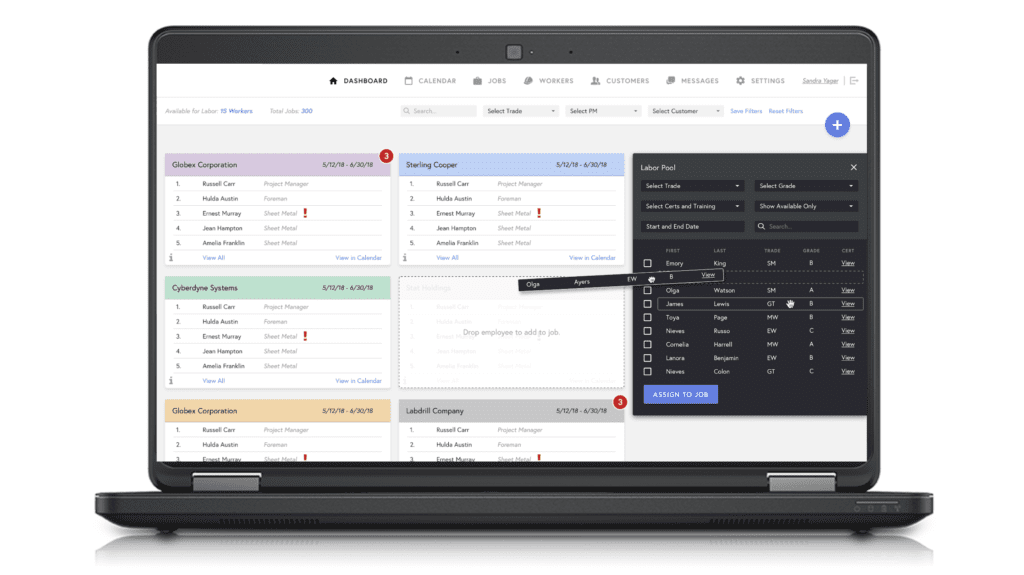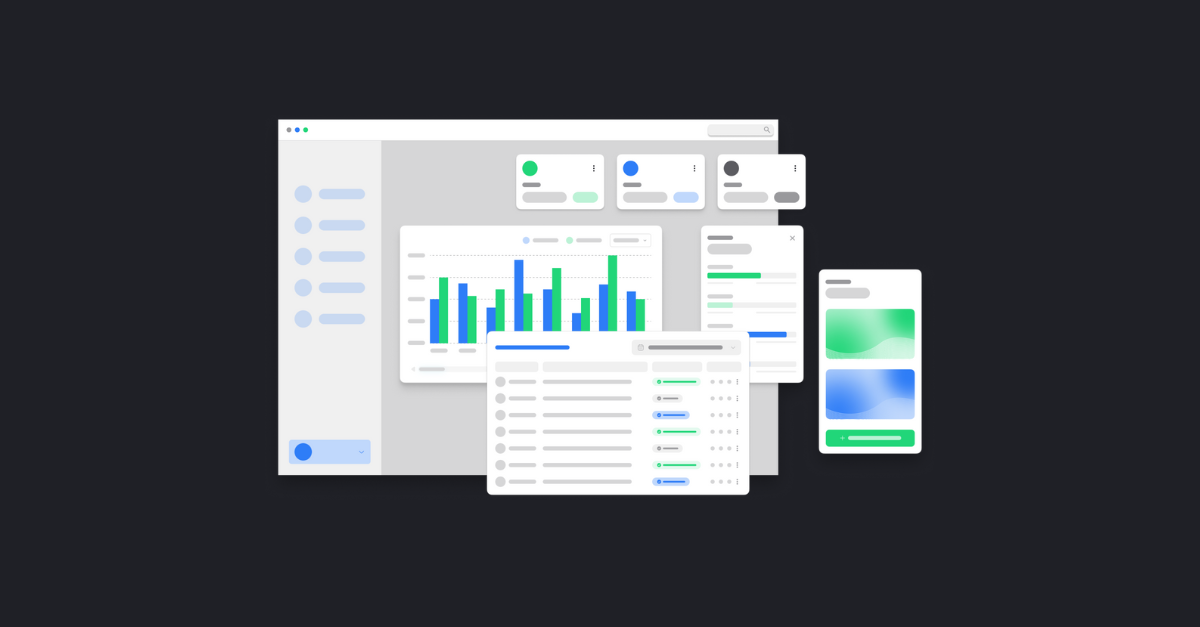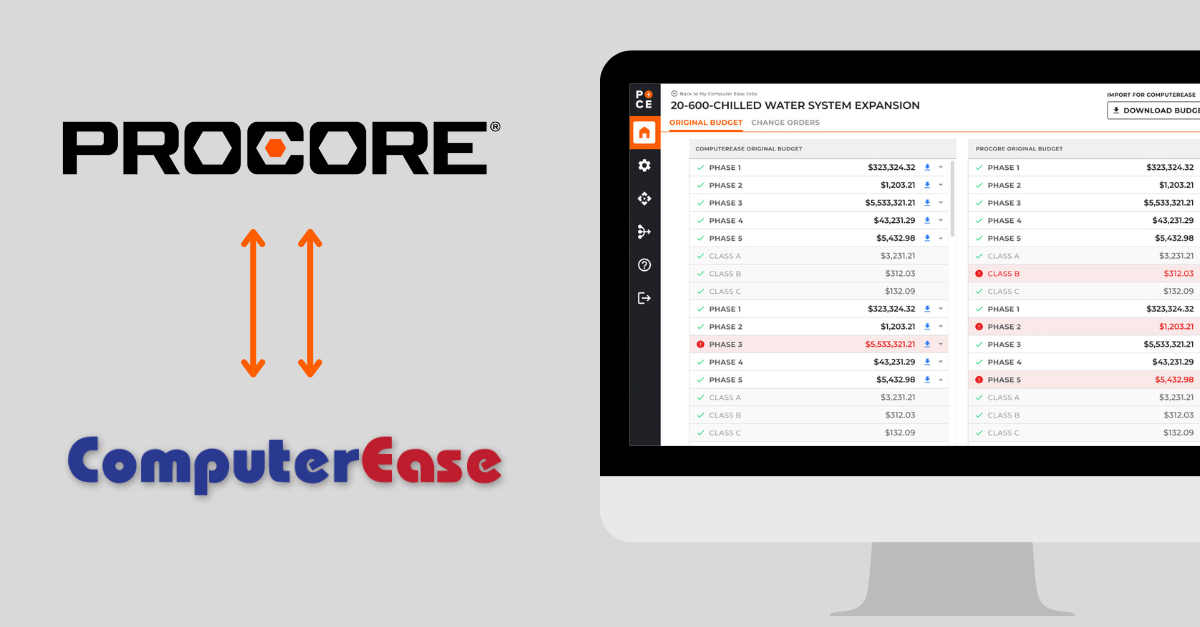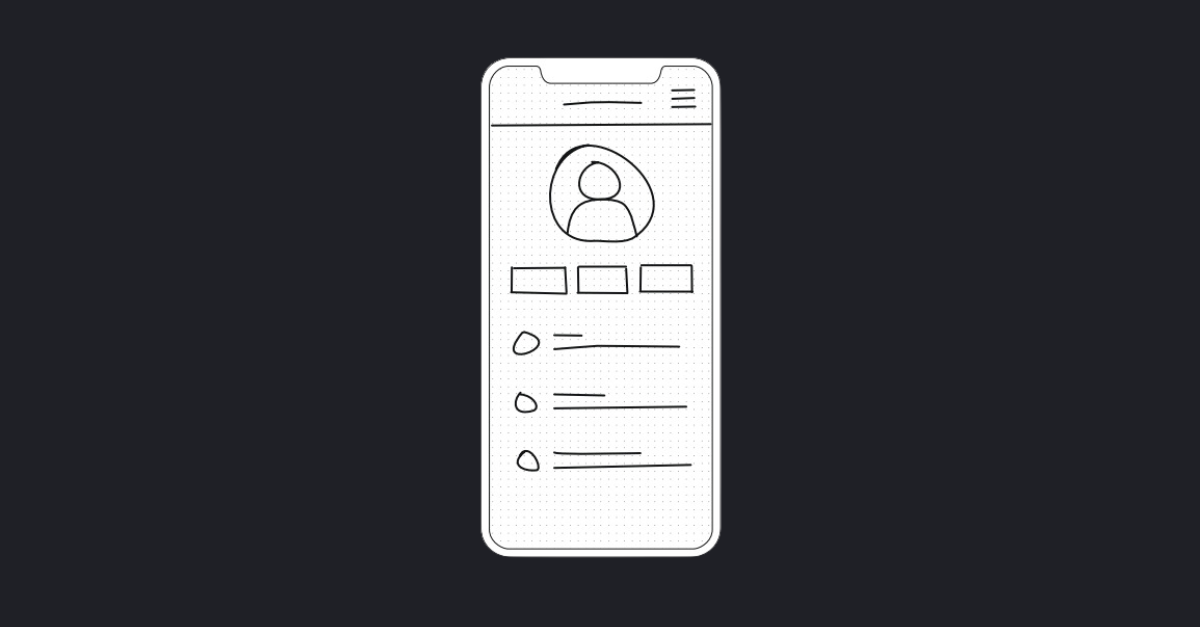Manual scheduling methods plague trade contractors, but more companies than ever are investing in SMART scheduling solutions.

Old-style scheduling – like whiteboards, pieces of paper, and information tucked in someone’s email – cause countless headaches and add risk to completion dates, budgets, and safety. Adopting a SMART Scheduling system means leveraging mobile apps and operations dashboards to give everyone access to the right data and communication tools in real-time. These custom solutions work the way your company works and provide huge efficiencies and return on investment (ROI).
Consider the expensive problems that SMART scheduling can solve:
- How cumbersome is it to get all the people in the same room at the same time to figure out a schedule?
- How much time does it take to get everyone scheduled and make frequent changes?
- How much do scheduling mistakes (like double-bookings) cost the company?
- What is the cost to your culture and worker retention due to last-minute scheduling changes?
Pain Points
Scheduling touches on every part of construction operations. A single scheduling change can impact all phases of the job and its associated tasks. Checklists, due dates, QA requirements, materials and tools planning – all these components and more may be affected by even one schedule adjustment that inevitably occurs on every job.
But when implementing a scheduling solution that can accommodate this kind of fluctuation, a company does not need to reinvent the wheel. It just needs to streamline data and make sure those key details are flowing in from the field to the dashboard each day. This typically starts with data collection from a simple Time Entry app used by Foreman or on the phones of the field crews. Once data such as Time, Change Orders, job progress, materials needs, T & M, etc. are available, the logic needed to schedule appropriately can begin to be streamlined.

Big Advantages of A Customized System
Because the way in which a company operates is a big part of its competitive advantage, an off-the-shelf product that pushes the company into changing the way it does business can come at a price too high.
A customized scheduling solution can provide a critical answer to that problem. It is built for the unique way in which an individual company operates. It’s software that will be less rigid and easy to interact with, offering a company app that is more intuitive for field users because it is aligned closely to how the business runs. It’s an admin dashboard that simply displays the information and tasks that users need to accomplish based on the status of each job.
Logic & Bottlenecks
Simply put, logic is all the things that are dynamic about how a company does business. Construction as a high mix industry is subject to the wide variability in how jobs are priced, how costs are tracked, and differences in rates and contract terms, to name just a few factors. Taken together, these factors represent the company’s logic.
Severe bottlenecks can occur because typically, a good amount of the company’s logic resides in a few people’s heads. Though these are usually people indispensable to operations – they are the most trusted, loyal, skilled and knowledgeable – the reliance on individuals can introduce inefficiencies and open up big risks to job completion. What happens when they require sudden PTO? What if the individual leaves? One day, they will.
A good amount of a company’s logic typically resides in a few people’s heads. What if the individual leaves? One day, they will.
But custom SMART scheduling can offer a critical answer to this problem by automating and offering the means to share the logic, moving key data about processes into the hands of everyone who needs it, and by building the foundation for scaling and growing the business.
Different People, Different Pages
For scheduling to work, everybody needs to be on the same page. The right people need to get the right updates at the right time. Information that exists on sheets of paper sometimes must be driven back to a management office. Information that resides in emails or on sticky notes on someone’s desk are not accessible to anyone else who needs it. These clunky methods can cause delays and safety risks. They ultimately waste time, tools, and talent.
Traditional software providers can’t make applications that are dynamic enough to serve all construction-related companies. There are just too many variables. They need to make generic products that can work with as many companies as possible, and often this leads their users to fall back on whiteboards, paper, and emails in order to adapt their logic to the canned product.
A powerful dashboarding solution will show each person the minimal amount of information needed, geared right at what they need to know, to get their jobs done. Dashboards like these increase user buy-in and reduce the risk that users will go back to old styles of getting their work done.

In simple terms, the brilliance of a SMART scheduling dashboard is that the individual company gets to decide what’s important – what to show, when to show it, and who should see it. Each trade and each company executes their work differently For example, some trades complete jobs in a few hours and travel to many sites a day, while others have projects that last a few years with multiple phases. A SMART scheduling dashboard should be built around variables like these that are specific to your company, it’s people, and it’s processes.
In simple terms, the brilliance of a SMART scheduling dashboard is that the individual company gets to decide what’s important – what to show, when to show it, and who should see it.
Designing a Custom Schedule
For scheduling dashboards to be SMART, they need to cover more than the basic parts common to all construction-related companies. It needs to adapt to a given company’s labor pool, job specs, scope, drawings, critical paths, and so on, answering specific questions:
- Who and where is the client? Who are the other trades? Who is the project manager?
- What needs to be done? How many phases?
- What type of workers will be needed, and how many of each?
- What is the budget?
- What approach is being used? What materials?
- When does each part need to start and finish?
- What are the scheduling restrictions such as certifications, vaccinations, experience, and rating?
A well-designed scheduling dashboard will do more than put the important information “somewhere.” It will allow users to visualize the scenario at hand – such as who is assigned to what, who is available when – in a way that is molded to the business, with interactivity features such as 1-click search, drag-and-drop editing, sorting, and filtering.
These features consider thousands of data inputs and intuitively display only the information needed to make the decision by the business leader.
Once job specs, budget, and employee data are flowing in, it becomes far easier for managers to align schedules with crews, to reduce the chance of expensive errors, and to resolve conflicts before they materialize.

Start Simple
Ultimately, successful scheduling comes down to three targets:
- Organizing Data
- Aligning Resources
- Communicating with People
Technology is good at handling all three. And that’s why more and more companies are taking advantage of SMART scheduling and leaving static scheduling behind. Ultimately, technology can offload and automate the logic behind a company’s operations, freeing up people’s time to do what humans are good at — recognizing patterns, building relationships, and doing the actual work.
Start to be SMART
The move to SMART scheduling doesn’t need to involve replacing current applications. SMART systems are connected to – that is, they sit alongside – existing software such as Estimating tools or back-office systems like Accounting (Quickbooks, SAGE, Foundation, etc).
Whether a company moves to a SMART scheduling system from whiteboards or by ditching a clunky off-the-shelf product, the transition operates on the same principle of one logical step at a time. In other words, successful users of SMART scheduling solutions aren’t just the “tech-heavy” companies. Today, every company needs to leverage mobile technology to remain competitive. It’s a matter of looking at the challenges faced by the individual company and proceeding toward the answers that provide quick wins and make sense for the bottom line.
Successful users of SMART scheduling solutions aren’t just “tech-heavy” companies. Today, every company needs to leverage mobile technology to remain competitive.
To start, simply ask your team to write down 3 places in your current scheduling practices where they waste the most time or get the most frustrated. Then, list the information they need access to in order to streamline the scheduling process each week. Finally, envision where this data could be more efficient using technology.
Now it’s time to reach out to an expert Custom Software Development team with robust experience in the construction industry to help you define the steps to building a SMART Scheduling system that will save your company money and allow the business to overcome barriers to growth.
About SPARK Business Works
SPARK helps construction clients across the nation improve their businesses by streamlining processes, automating tasks, and positioning data for strategic decision-makers. The experts at SPARK Business Works have learned exactly what it takes to create scheduling apps and dashboards that are successful in construction. SPARK has worked across numerous trades including GCs, Electrical, Mechanical, Finishing, Painting, Hardware, Roofing, and more. See case studies.





